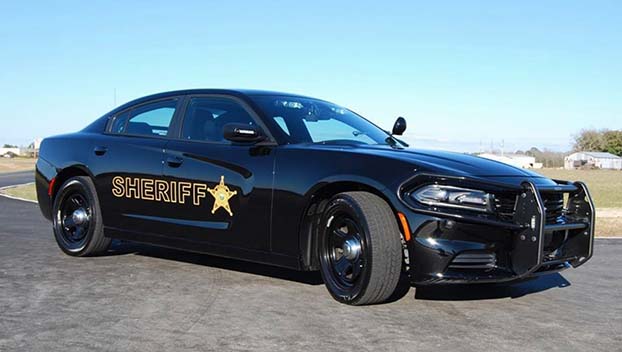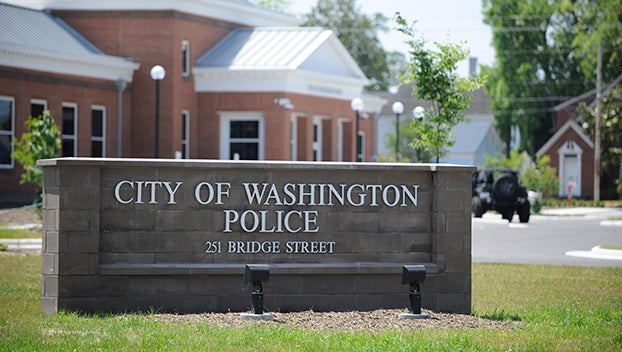WWI Vet made the ultimate sacrifice
Published 8:00 am Wednesday, November 22, 2023
|
Getting your Trinity Audio player ready...
|
By Clark Curtis, For Washington Daily News
Born in Washington on February 3, 1899, James Henry Baugham grew up with a reputation for impetuosity and boldness. He was said to have “halted a brace of runaway horses by lunging directly in front of them, and while standing his ground and throwing his arms in the air, dared them to run around him.” He also grew up with a reputation for fast cars and boats.
Baugham was one of eight children of William Patrick Baugham and Mary Anna Hanford Baugham. Their family home was located at 143 W. 2nd St., on the Southeast corner of 2nd and Respess. His parents encouraged Baugham and his seven siblings to become well educated and independent thinkers and doers. Baugham would attend public school in Warrenton, North Carolina, the hometown of his mother. Following the untimely death of his father in 1910, Baugham would go on to attend prep school at Randolph Macon Academy, in Front Loyal, Virgina, and then the Bingham Military School Asheville. In 1916 he enrolled at North Carolina State University, where he proved to be a natural athlete and became a star halfback on the varsity football team.
However, after only two months at State, Baugham dropped out to follow his true passion, aviation. At the age of 17 he enrolled in the Curtiss Aviation School in Newport News, Virgina, with the goal of becoming an aviator in the U.S. Military. Baugham finished his flight instruction in the Spring of 1917, just as the U.S. had entered “the war to end all wars,” in Europe. Eager to serve his country, Baugham learned that at the age of 18, he was too young to enlist in the U.S. Air Service. It was then that he read of a call in the Raleigh News and Observer for flyers to assist in the war effort in France. Soon after he was on a boat headed for France. It was during that trip across the Atlantic that Baugham was said to have told the captain of the boat that he dreamed of flying home upon his return, indicating “why shouldn’t he be the first to fly the Atlantic and land on Ocracoke Island, as it had never been done before.”
In July of 1917 Baugham began six months of intense “real war work” flight training at Camp Avord in France There he demonstrated a highly unique skill and aptitude for aerial acrobatics. It was said he was “one of the most daring and skilled students who had ever trained at the French aviation center.”
On December 26th of that year, he was assigned to the French pursuit squadron Escadrille 157, which was a part of the Lafayette Flying Corps, the name given to the American volunteer pilots who flew in the French Air Force. Flying a Nieuport fighter plane, Baugham undertook several missions and by April of 1918, he was promoted to sergeant. He was then assigned to a new squadron, Escadrille 98, and given the latest SPAD, a French aircraft manufacturer, pursuit aircraft, and designed primarily for air-to-air combat. In a letter to his mother Baugham wrote, “I go to the front in a few days, and although I am going to do my best, I don’t expect to last very long. I am not afraid of death or anything else that the Germans might do to me. I have had so many of my comrades killed that I look forward to it as a matter of course…”
In another letter, dated April 8, 1918, Baugham wrote, “ Dear Mother, A German anti-aircraft gun let go at me. It took me about a half a minute to realize what was the matter, and by that time they happened to put two pieces of shrapnel in my wings. My roommate, Alan Cook, has been missing for five days now. Guess he is either killed or in Germany. Wally Winter was a good friend of mine. He was diving on a German and his wings came off. Houston Woodward and Chuck Kerwood are reported killed or prisoners in Germany. It happens all the time. You just can’t tell who is next.”
On July 1, 1918, exactly one year after stepping foot on French soil, Baugham would become the next on the list. Baugham would engage three German planes. Though seriously wounded in the dogfight, and his plane severely damaged, he managed to make a crash landing in French-held territory. He was taken to a French hospital, but would succumb to his injuries the following day. In a letter to his mother his commanding officer wrote, “He died like a true American, making a bold fight against the odds. You can be proud of him; he has joined the ranks of those glorious heroes who have fought for an ideal.”
Baugham is buried at Memorial De L’Escadrille Lafayette Villeneuve-L’Etang France. He had previously been awarded the French Croix de Guerre for bravery. One month after his death he was posthumously awarded the prestigious Medaille Militaire, the highest honor a soldier could receive from the French government. It is usually awarded to generals for feats of supreme strategy, and to men in the ranks for acts of supreme heroism. Of special note, Baugham was recognized for having to force land his plane in “No Man’s Land” between French and German lines, and miraculously escaped to Allied territory under the rain of gunfire. Other recent recipients of the award include Winston Churchill, Dwight Eisenhower, Douglas McArthur and Franklin D. Roosevelt.
Baugham was one of only four North Carolinians who enlisted in the French Air Force during WWI. The others were Kiffin Rockwell of Asheville, James McConnell of Carthage, and Arthur Bluehenthal of Wilmington, all of whom lost their lives in combat. Baugham was the youngest aviator to fly for France and the youngest, at that time, to have died in combat.
As noted by the author of “Mutiny on the Bounty”, James Norman Hall in his book, “The Lafayette Flying Corps, he refers to Baugham as, “A fine type of Southerner, keen, alert, and full of courage. He came from old American stock, the kind that loves danger for its own sake and fights to the last ditch.”
“Baugham answered the call of duty for the French people,” said Brown Library historian Stephen Farrell. “But his legacy remains here in Washington and we need to celebrate his bravery and his sacrifice. His story is our story.”
A special thanks to Brown Library Historian, Stephen Farrell, and Baughams’ great nephew and Washington resident, Blount Rumley, for providing historical records and photos.
















